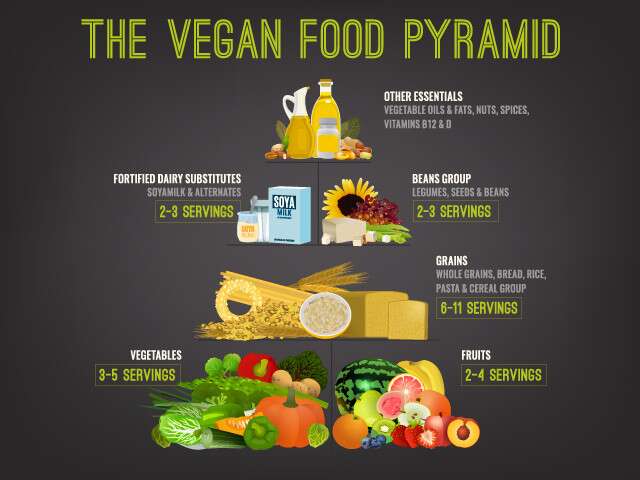
Source: Shutterstock
Vegan food refers to food that is free from animal products, including meat, dairy, eggs, and honey. It is a plant-based diet that focuses on consuming vegetables, fruits, whole grains, legumes, nuts, and seeds. Veganism is the practice of not using animal products in a diet or using any products which are derived from rearing or causing cruelty to animals. (1) Veganism is not just a diet, but a lifestyle that promotes compassion towards animals and the environment. High protein vegan foods are becoming increasingly popular due to their health benefits, as they are often low in saturated fat and high in fiber and other nutrients.
Benefits and Risks Of A Vegan Diet
How Much Protein Do We Need?
High-Protein Vegan Foods
Can You Eat Too Much Protein?
Sample One-day Indian Vegan Diet Plan
Frequently Asked Questions (FAQs)
Conclusion
Sources
However, protein requirements can vary depending on age, sex, level of physical activity, and overall health status. For example, athletes and pregnant or lactating women may require more protein. It's important to consume a variety of protein sources, including plant-based options, to ensure that all essential amino acids are being consumed. A growing body of research indicates that protein intakes well above the current Recommended Dietary Allowance help to promote healthy aging, appetite regulation, and weight management. (3)
Also Read - How Much Protein Should I Eat Per Day
 Source- Shutterstock
Source- Shutterstock
Tofu is a soy-based product made from curdled soy milk, while tempeh is made from fermented soybeans. Edamame, on the other hand, are young soybeans that are usually boiled or steamed. Tofu, tempeh, and edamame are all high in protein, with tofu containing about 10-20g per 100g serving, tempeh containing about 18-20g per 100g serving, and edamame containing about 11g per 100g serving. They can be used in a variety of dishes, including stir-fries, salads, and soups. It is one of the best source of high protein vegan food.
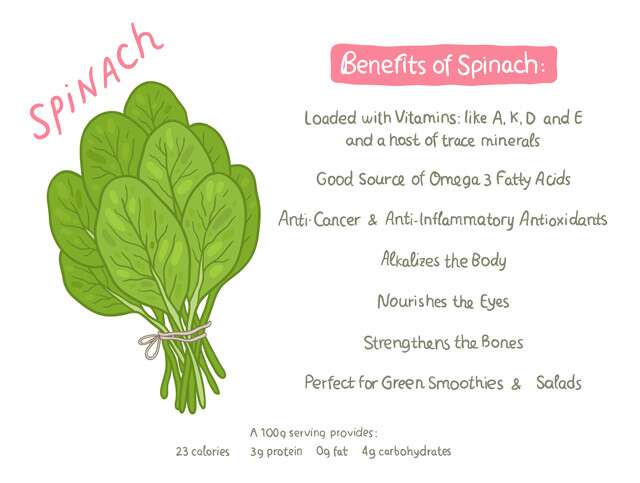
Source- Shutterstock
Spinach is a leafy green vegetable that is high in protein, iron, and other nutrients. It can be eaten raw in salads or cooked in a variety of dishes, such as soups and stews. Spinach contains about 2.9g of protein per 100g serving which is also beneficial for better functioning of blood flow as iron is one of the main components of blood as well as for overall health.
Nuts and seeds are versatile sources of protein and energy for vegans:
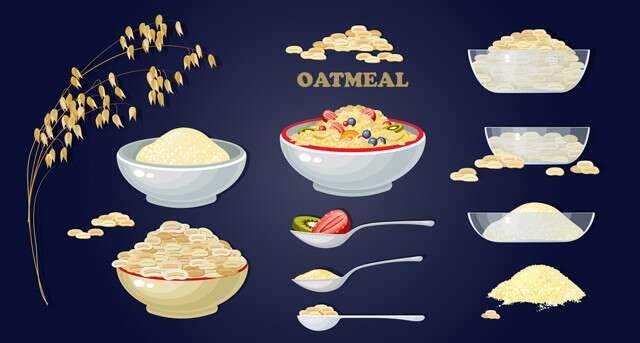 Source- Shutterstock
Source- Shutterstock
Oats are whole-grain cereals high in protein, fiber, and other nutrients. They can be cooked in various ways and are a great addition to breakfast dishes, such as oatmeal or granola. Oats contain about 3.3g of protein per 100g serving. Oats contain a relatively high protein content and comprise a considerable amount of lipids and other bioactive compounds, such as beta-glucans, phenolics (trace–150 mg/kg), and avenanthramides (26–150 mg/kg), and flavonoids 1.77 mmol/g. (6)
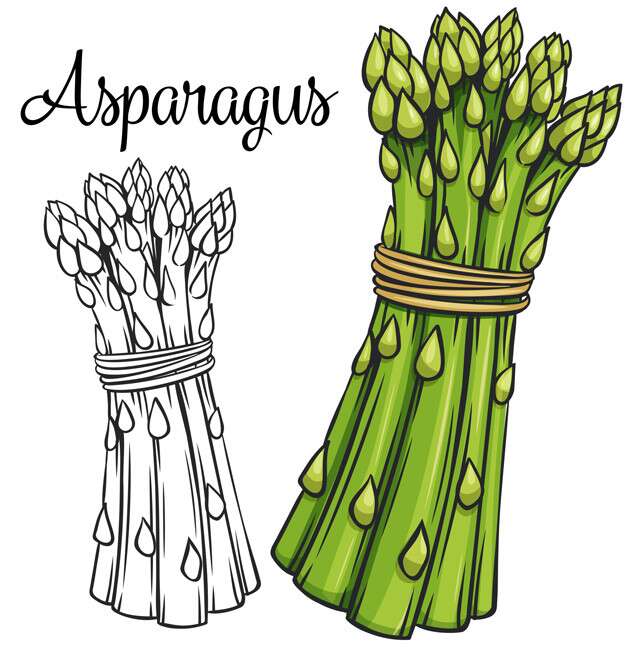
Source-Shutterstock
Asparagus is a nutrient-dense vegetable, a popular choice for those seeking to indulge in high-protein vegan foods. One cup of cooked asparagus contains about 4 grams of protein. Asparagus can be eaten raw or cooked, and it is a great addition to salads, soups, and stir-fries.
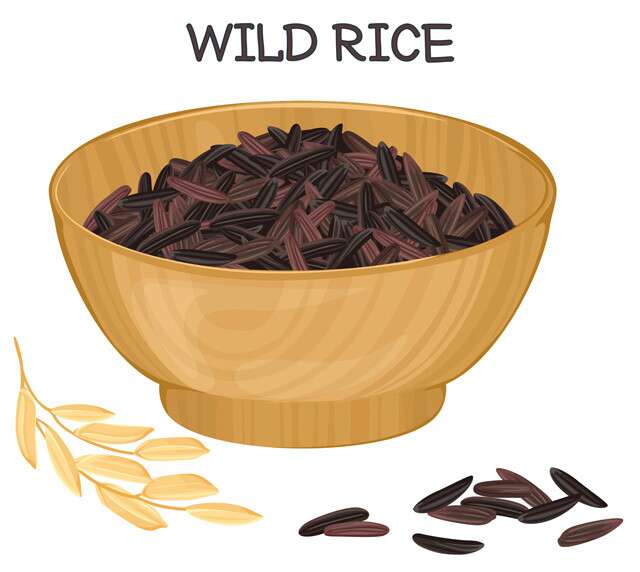 Source-Shutterstock
Source-Shutterstock
Wild rice is a type of grass that is native to North America. It is higher in protein than many other types of rice, with one cup cooked containing about 6 grams of protein. Wild rice has a nutty flavor and a chewy texture and can be used in a variety of dishes, including salads and soups.

Source-Shutterstock
Kale is a leafy green vegetable that has become popular in recent years due to its high nutrient content. One cup of cooked kale contains about 3 grams of protein. Kale can be eaten raw or cooked and is a great addition to salads, soups, and smoothies.
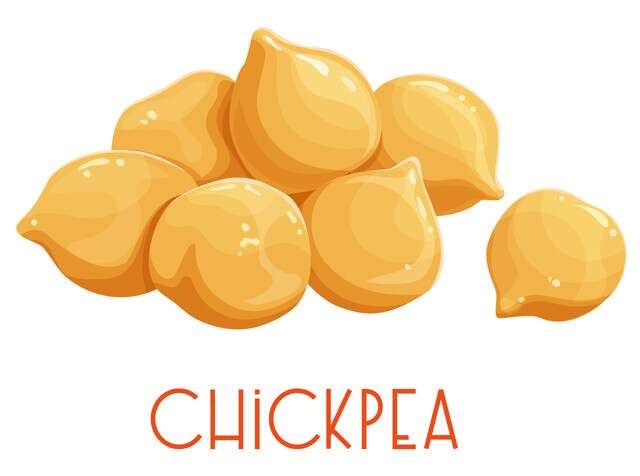 Source- Shutterstock
Source- Shutterstock
Chickpeas are a type of legume commonly used in many vegan dishes. They are an excellent source of plant-based protein, containing around 7.25 grams of protein per half-cup serving when cooked. Chickpeas are also high in fiber and provide important nutrients like iron, folate, and zinc. They can be used in a variety of dishes such as hummus, falafel, curries, salads, and stews. Chickpeas can be cooked in different ways, such as boiling, pressure-cooking, roasting, or frying. They can also be consumed raw after soaking them in water overnight.

Here is a sample one-day Indian high protein vegan diet plan:
Breakfast:
Vegan food refers to food that is free from animal products, including meat, dairy, eggs, and honey. It is a plant-based diet that focuses on consuming vegetables, fruits, whole grains, legumes, nuts, and seeds. Veganism is the practice of not using animal products in a diet or using any products which are derived from rearing or causing cruelty to animals. (1) Veganism is not just a diet, but a lifestyle that promotes compassion towards animals and the environment. High protein vegan foods are becoming increasingly popular due to their health benefits, as they are often low in saturated fat and high in fiber and other nutrients.
Benefits and Risks Of A Vegan Diet
How Much Protein Do We Need?
High-Protein Vegan Foods
Can You Eat Too Much Protein?
Sample One-day Indian Vegan Diet Plan
Frequently Asked Questions (FAQs)
Conclusion
Sources
Benefits and Risks Of A Vegan Diet
A vegan diet can offer many health benefits, including lower risk of heart disease, cancer, and type 2 diabetes. It is rich in fiber, antioxidants, and various nutrients that promote overall health. Additionally, a vegan diet can also have environmental benefits, as it can reduce greenhouse gas emissions and preserve natural resources. Vegan diets form a subset of plant-based diets, which may exclude the consumption of some or all forms of animal (2) or animal-derived foods which results in risk of deficiencies in essential nutrients such as vitamin B12, iron, and calcium.How Much Protein Do We Need?
According to the World Health Organization (WHO), adults need a minimum of 0.83 grams of protein per kilogram of body weight per day. This means that a person who weighs 68 kilograms (150 pounds) needs at least 56 grams of protein per day.However, protein requirements can vary depending on age, sex, level of physical activity, and overall health status. For example, athletes and pregnant or lactating women may require more protein. It's important to consume a variety of protein sources, including plant-based options, to ensure that all essential amino acids are being consumed. A growing body of research indicates that protein intakes well above the current Recommended Dietary Allowance help to promote healthy aging, appetite regulation, and weight management. (3)
Also Read - How Much Protein Should I Eat Per Day
High-Protein Vegan Foods
Tofu, Tempeh, and Edamame

Tofu is a soy-based product made from curdled soy milk, while tempeh is made from fermented soybeans. Edamame, on the other hand, are young soybeans that are usually boiled or steamed. Tofu, tempeh, and edamame are all high in protein, with tofu containing about 10-20g per 100g serving, tempeh containing about 18-20g per 100g serving, and edamame containing about 11g per 100g serving. They can be used in a variety of dishes, including stir-fries, salads, and soups. It is one of the best source of high protein vegan food.
Lentils
Lentils are a type of legume that are high in protein, fiber, and other nutrients. They can be cooked in a variety of ways and are a great addition to salads, soups, and stews. Lentils contain about 9g of protein per 100g serving. About one-third of the calories in lentils come from protein, making it the third-highest level of protein by weight of any legume or nut. (4)Seitan
Seitan, also known as wheat meat, is a meat substitute made from wheat gluten. It has a chewy texture and can be used in a variety of dishes, such as stir-fries, sandwiches, and tacos. Seitan is a complete protein, meaning it contains all of the essential amino acids, and contains about 25g of protein per 100g serving.Spinach

Source- Shutterstock
Spinach is a leafy green vegetable that is high in protein, iron, and other nutrients. It can be eaten raw in salads or cooked in a variety of dishes, such as soups and stews. Spinach contains about 2.9g of protein per 100g serving which is also beneficial for better functioning of blood flow as iron is one of the main components of blood as well as for overall health.
Quinoa
Quinoa is a gluten-free seed that is often referred to as a grain. It is a high-protein vegan food and contains all of the essential amino acids. Because of these nutritional properties and health benefits, quinoa is considered a novel healthy food, occasionally referred to as a ”superfood”. (5) Quinoa can be used in a variety of dishes, such as salads, stir-fries, and soups. It contains about 4.4g of protein per 100g serving.Nuts and Seeds
Nuts and seeds are high in protein and healthy fats. Examples include almonds, cashews, pumpkin seeds, and chia seeds. They can be eaten raw as a snack or used in a variety of dishes, such as salads and smoothies. The protein content varies depending on the type of nut or seed, but they generally contain about 4-9g of protein per 28g serving.Nuts and seeds are versatile sources of protein and energy for vegans:
- Hemp seeds – 5g per heaped tablespoon
- Ground linseed – 3g per heaped tablespoon
- Almonds – 3g of protein for every six almonds
- Walnuts – around 3g of protein for every three whole walnuts
- Pumpkin seeds – 4g per tablespoon
- Pistachios – just over 1g of protein over 10 pistachios
- Cashew nuts – 3g per 10 cashew nuts
- Brazil nuts – 4g per six Brazil nuts
Oats

Oats are whole-grain cereals high in protein, fiber, and other nutrients. They can be cooked in various ways and are a great addition to breakfast dishes, such as oatmeal or granola. Oats contain about 3.3g of protein per 100g serving. Oats contain a relatively high protein content and comprise a considerable amount of lipids and other bioactive compounds, such as beta-glucans, phenolics (trace–150 mg/kg), and avenanthramides (26–150 mg/kg), and flavonoids 1.77 mmol/g. (6)
Chia Seeds
Chia seeds are small, black seeds that are high in protein, fiber, and other nutrients. They can be eaten raw or soaked in liquid to create a gel-like substance. Chia seeds can be used in a variety of dishes, such as smoothies, puddings, and salads. They contain about 4.7g of protein per 28g serving.Also Read:- Oats Benefits For Overall Health
High Protein Food: All You Need To Know
Do You Believe These Myths About Plant-Based Diets?
9 Proven Benefits Of Castor Oil For Skin
High Protein Food: All You Need To Know
Do You Believe These Myths About Plant-Based Diets?
9 Proven Benefits Of Castor Oil For Skin
Beans
Beans are a type of legume that are high in protein, fiber, and other nutrients. Examples include black beans, kidney beans, and chickpeas. They can be used in various dishes, such as chilli, salads, and stews. Beans contain about 6-9g of protein per 100g serving. Because of their high concentration of protein and nutrients, consuming more beans in the diet could improve overall health and also decrease the risk of developing certain diseases, including heart disease, obesity and many types of cancers. (7)Asparagus

Source-Shutterstock
Asparagus is a nutrient-dense vegetable, a popular choice for those seeking to indulge in high-protein vegan foods. One cup of cooked asparagus contains about 4 grams of protein. Asparagus can be eaten raw or cooked, and it is a great addition to salads, soups, and stir-fries.
Spirulina
Spirulina is a type of blue-green algae that is often marketed as a superfood due to its high nutrient content. It is a complete protein, meaning it contains all the essential amino acids the body needs. It is typically consumed in powdered form and can be added to smoothies or mixed with water.Soy Milk
Soy milk is a popular plant-based alternative to cow's milk. It is made from whole soybeans and has a creamy texture and a mild, nutty flavor. One cup of soy milk contains about 8 grams of protein. Soy milk can be used in place of cow's milk in recipes and is also a great addition to smoothies.Wild Rice

Wild rice is a type of grass that is native to North America. It is higher in protein than many other types of rice, with one cup cooked containing about 6 grams of protein. Wild rice has a nutty flavor and a chewy texture and can be used in a variety of dishes, including salads and soups.
Buckwheat
Despite its name, buckwheat is not actually a type of wheat, but rather a type of seed. It is high in protein, with one cup of cooked buckwheat containing about 6 grams of protein. Buckwheat has a nutty flavor and a slightly chewy texture, and it can be used in a variety of dishes, including pancakes, porridge, and salads.Broccoli
Broccoli (Brassica oleracea, var. Italica) is the vegetable, offering a high nutritive and dietetic value with their suitable content of proteins, bioactive compounds, vitamins, minerals and dietary fiber.(8) Broccoli is a cruciferous vegetable high in various nutrients, including protein. One cup of cooked broccoli contains about 4 grams of protein. Broccoli can be eaten raw or cooked and is a versatile ingredient that can be used in salads, stir-fries, and soups.Kale

Source-Shutterstock
Kale is a leafy green vegetable that has become popular in recent years due to its high nutrient content. One cup of cooked kale contains about 3 grams of protein. Kale can be eaten raw or cooked and is a great addition to salads, soups, and smoothies.
Hummus and pita
Hummus is a dip made from chickpeas, tahini, and various seasonings. It is high in protein, with one cup of hummus containing about 19 grams of protein. Pita bread is a type of flatbread that is often used to dip into hummus. It is also a good source of protein, with one large pita containing about 10 grams of protein.Pea milk
Pea milk is a plant-based alternative to cow's milk that is made from yellow peas. It has a creamy texture and a mild, slightly sweet flavor. One cup of pea milk contains about 8 grams of protein. Pea milk can be used in place of cow's milk in recipes and is also a great addition to smoothies.
Chickpeas are a type of legume commonly used in many vegan dishes. They are an excellent source of plant-based protein, containing around 7.25 grams of protein per half-cup serving when cooked. Chickpeas are also high in fiber and provide important nutrients like iron, folate, and zinc. They can be used in a variety of dishes such as hummus, falafel, curries, salads, and stews. Chickpeas can be cooked in different ways, such as boiling, pressure-cooking, roasting, or frying. They can also be consumed raw after soaking them in water overnight.
Vegan meat
Vegan meat, also known as plant-based meat or meat substitutes, is a type of food that is designed to mimic the taste and texture of meat. Many types of vegan meat are made from a combination of soy, wheat, or pea protein. They can be used in a variety of dishes, including burgers, meatballs, and tacos.Can You Eat Too Much Protein?
Consuming excessive amounts of protein can lead to negative health effects, particularly for people with kidney disease or impaired kidney function. When protein is metabolized, it produces waste products that are filtered out of the body by the kidneys. Consuming too much protein can put a strain on the kidneys, making them work harder to filter out the waste products, potentially causing kidney damage or worsening existing kidney problems. Additionally, consuming high amounts of animal-based protein has been linked to an increased risk of heart disease and certain cancers.Sample One-day Indian Vegan Diet Plan

Here is a sample one-day Indian high protein vegan diet plan:
Breakfast:
- Masala oatmeal: Cook rolled oats with water, salt, and spices like turmeric, cumin, coriander, and red chili powder. Top with chopped veggies like tomatoes, onions, and bell peppers.
- Fresh fruit: 1 apple or 1 banana
- Green tea
- Roasted chana (chickpeas): Toss cooked chickpeas with spices like chaat masala and roast in the oven until crispy.
- Chana masala: Cook chickpeas in a spicy tomato-based sauce and serve with brown rice or quinoa.
- Mixed vegetable salad with Mint-coriander chutney: Chop up veggies like cucumber, carrots, and bell peppers and mix with lemon juice and salt.
- Peanut butter and banana smoothie
- Baingan bharta: Roast eggplant and mix with spices, tomatoes, onions, and cilantro.
- Dal tadka: Cook yellow lentils with spices and top with a tadka of mustard seeds, cumin seeds, and curry leaves.
- Roti: Whole wheat flatbread.
- Cucumber raita: Mix chopped cucumber and vegan yogurt with spices like cumin and coriander.
- Warm turmeric milk: Heat up almond milk with turmeric, cinnamon, and black pepper for a soothing nighttime drink.
Frequently Asked Questions (FAQs)
Q. What vegan food has the highest protein?
A. Soybeans and soy-based products like tofu and tempeh are considered as one of the high protein vegan foods, with roughly 10-19 grams of protein per 100 grams. Other high-protein vegan foods include seitan, lentils, quinoa, chia seeds, nuts and seeds, and some vegetables like spinach, broccoli, and asparagus.Q. How can a vegan get 100g of protein a day?
A. A vegan can get 100g of protein a day by incorporating high-protein vegan foods in their meals throughout the day. Some examples of such foods include tofu, tempeh, edamame, lentils, quinoa, seitan, nuts and seeds, beans, and vegan meat substitutes. Eating a variety of these foods and making sure to consume enough calories can help a vegan reach their daily protein goal.Q. What foods are highest in protein?
A. Vegan foods that are highest in protein include tofu, tempeh, edamame, soy milk, wild rice, buckwheat, broccoli, kale, hummus and pita, pea milk, vegan meat, and chickpeas. These foods are not only high in protein but also provide a variety of other important nutrients like fiber, vitamins, and minerals. Eating a combination of these foods throughout the day can help vegans meet their protein needs. It's important to note that the amount of protein needed varies depending on a person's age, gender, and activity level.Q. How do vegans get enough protein?
A. Vegans can get enough protein by incorporating plant-based protein sources such as beans, lentils, tofu, tempeh, nuts, seeds, and whole grains into their diet. It is important to eat a variety of these protein sources throughout the day to ensure that the body receives all of the essential amino acids it needs.Q. Are oats high in protein?
A. Oats are a good source of protein. One cup of cooked oats contains approximately 6 grams of protein. However, oats are a good source of fiber, vitamins, and minerals, making them a healthy addition to a vegan diet.Conclusion
In conclusion, a vegan diet can provide adequate protein if it is well-planned and includes a variety of high-protein vegan foods. It is important to note that protein requirements may vary based on individual factors such as age, gender, and activity level. The vegan diet, often characterized as very restrictive, is associated with health benefits but raises concerns. (10) Overall, a balanced vegan diet can provide all the essential nutrients, including protein, for a healthy and fulfilling lifestyle. A wholesome diet is essential in maintaining a healthy gut flora.Sources
- A Study on Attitudes towards Veganism in India; Aditya Shajwani Udgam school for children.
https://iosrjournals.org/iosr-jhss/papers/Vol.27-Issue8/Ser-3/E2708033849.pdf - Plant-based diets and their impact on health, sustainability and the environment; A review of the evidence.
https://apps.who.int/iris/bitstream/handle/10665/349086/WHO-EURO-2021-4007-43766-61591-eng.pdf?sequence=1&isAllowed=y - Protein: A nutrient in focus; Emily Arentson-Lantz, Stephanie Clairmont, Douglas Paddon-Jones, Angelo Tremblay, and Rajavel Elango; 22 July 2015
https://doi.org/10.1139/apnm-2014-0530 - Lentil (Lens culinaris L.) has high protein and carbohydrate content with essential dietary components for the humans, Wild Germplasm for Genetic Improvement in Crop Plants, 2021
https://www.sciencedirect.com/topics/agricultural-and-biological-sciences/lentil - Dietary-Nutraceutical Properties of Oat Protein and Peptides; Hamad Rafique, 1 Rui Dong, 1 Xiaolong Wang, 1 Aamina Alim, 1 Rana Muhammad Aadil, 2 Lu Li, 3 Liang Zou, 4 and Xinzhong Hu
https://www.ncbi.nlm.nih.gov/pmc/articles/PMC9294724/ - Nutritional Composition and Bioactive Components in Quinoa (Chenopodium quinoa Willd.) Greens: A Review; Safiullah Pathan1,* and Rafat A. Siddiqui2
https://www.ncbi.nlm.nih.gov/pmc/articles/PMC8840215/ - All About Beans Nutrition, Health Benefits, Preparation and Use in Menus; Julie Garden-Robinson, Ph.D., R.D., L.R.D. Food and Nutrition Specialist, Krystle McNeal, R.D., Program Assistant (former)
https://www.ndsu.edu/agriculture/extension/publications/all-about-beans-nutrition-health-benefits-preparation-and-use-menus - Protein fractionation of broccoli (Brassica oleracea, var. Italica) and kale (Brassica oleracea, var. Sabellica) residual leaves — A pre-feasibility assessment and evaluation of fraction phenol and fiber content; Thomas Prade a 1, Faraz Muneer b 1, Emilia Berndtsson b, Anna-Lovisa Nynäs b, Sven-Erik Svensson a, William R. Newson b, Eva Johansson b
https://www.sciencedirect.com/science/article/pii/S0960308521001541 - More Than Just A Diet: An Inquiry Into Veganism, Sarah E. Mann University of Pennsylvania
https://repository.upenn.edu/cgi/viewcontent.cgi?article=1021&context=anthro_seniortheses - The Impact of a Vegan Diet on Many Aspects of Health: The Overlooked Side of Veganism; Atul Bali • Roopa Naik; Published: February 18, 2023
https://www.cureus.com/articles/138315-the-impact-of-a-vegan-diet-on-many-aspects-of-health-the-overlooked-side-of-veganism#!/
Next Story